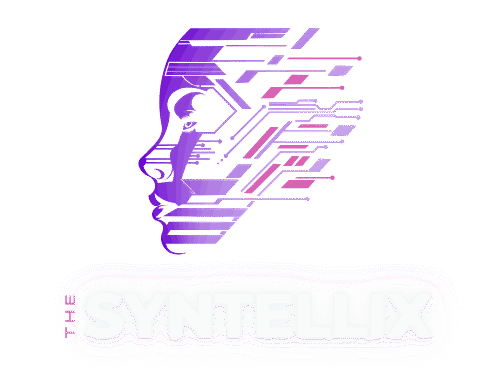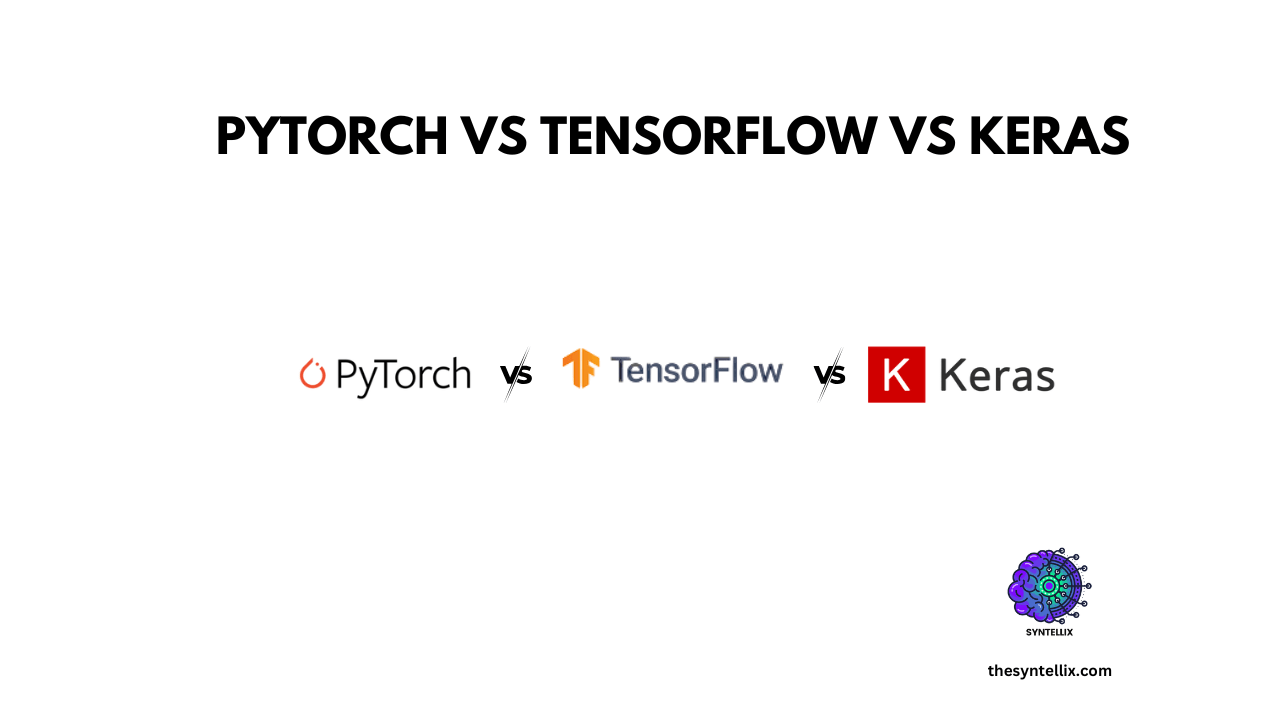PyTorch vs TensorFlow vs Keras are the main concepts while learning deep learning. Each framework has evolved, bringing new strengths to deep learning projects.
PyTorch now dominates academic publishing and model interpretability. TensorFlow remains the backbone for scalable, cross-platform deployments. Keras continues to lead in education and fast prototyping thanks to its streamlined syntax and TensorFlow integration.
These frameworks dominate the AI space, each with its own strengths, communities, and use cases. But which one is right for you?
In this post, I’ll break down the differences between PyTorch, TensorFlow, and Keras based on real-world experience and data. This blog post dissects the strengths, limitations, and best-fit scenarios for each framework using practical benchmarks, current industry trends, and community insights—so you can make a decision that’s grounded in more than hype.
PyTorch, TensorFlow, and Keras Overview
PyTorch
PyTorch, originally developed by Meta’s AI Research lab, has grown into one of the most trusted deep learning frameworks in both academic research and industrial applications.
Its appeal lies in how closely it mirrors the way developers think and code—especially through its use of dynamic computation graphs, or eager execution. This design allows users to build models using native Python structures, such as loops and conditionals, making the development process feel more intuitive and less abstract.
It’s a major reason why researchers favor PyTorch is when working with complex architectures like transformers or experimenting with novel training techniques.
For developers with a background in Python and NumPy, getting started with PyTorch feels like a natural extension of what they already know. The framework emphasizes clarity and readability, which helps to streamline the process of creating, modifying, and scaling models—no matter how sophisticated.
In recent years, PyTorch has also made notable progress in performance and deployment. Features like TorchScript allow models to be statically compiled for optimized execution, while tools such as torch.compile() have introduced just-in-time (JIT) compilation to boost runtime speeds.
PyTorch now supports mobile deployment via PyTorch Mobile and offers strong cross-platform compatibility through ONNX.
While it once trailed TensorFlow in production readiness, PyTorch has significantly narrowed that gap. It’s no surprise that leading AI organizations like OpenAI, Hugging Face, and Stability AI have adopted PyTorch as their framework of choice, reinforcing its position at the core of the modern AI ecosystem.
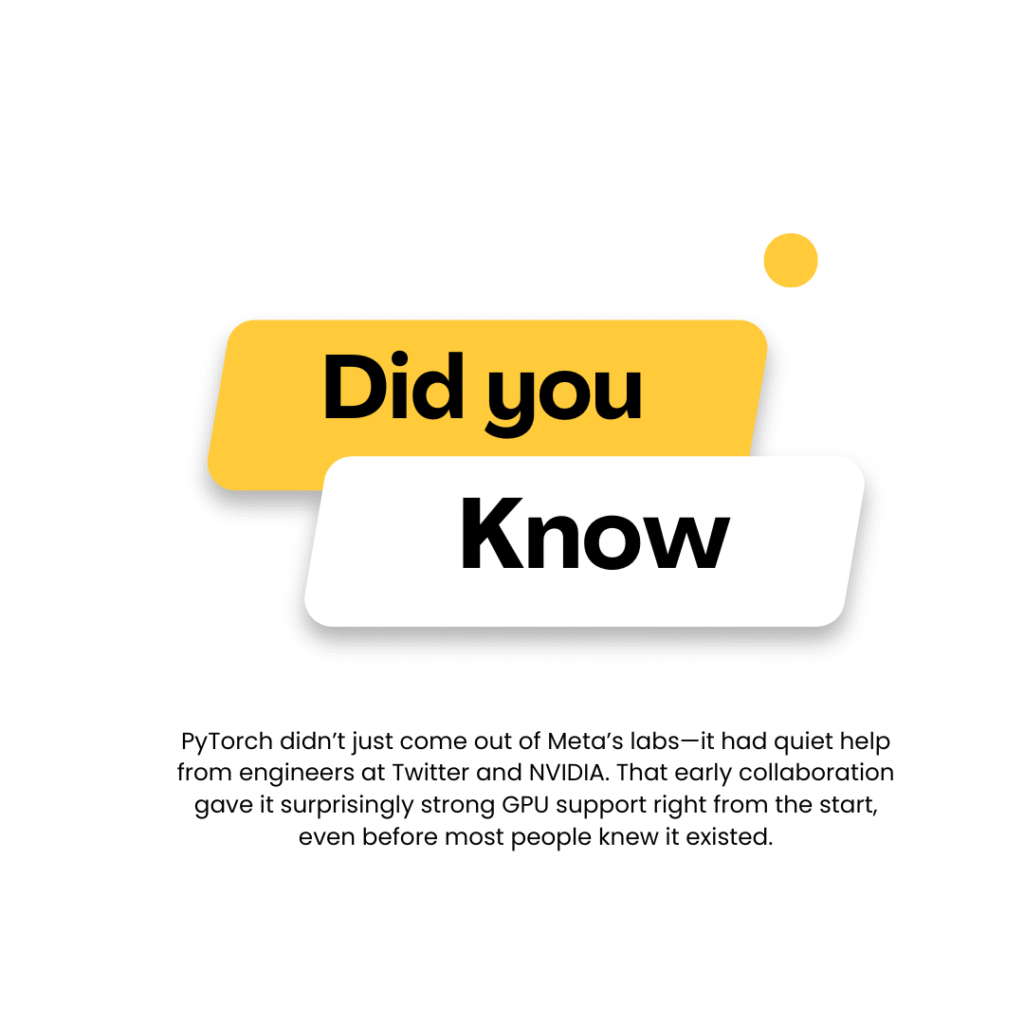
TensorFlow
TensorFlow, created by the team at Google Brain, has established itself as a leading platform for building scalable machine learning systems. Since its open-source release in 2015, it has positioned itself as more than just a deep learning library—it’s a comprehensive ecosystem designed to take models from experimentation to production with minimal friction.
From high-performance servers to mobile devices and browsers, TensorFlow offers specialized tools like TensorFlow Serving, TensorFlow Lite, and TensorFlow.js, all built to streamline the process of serving models in real-world environments.
Another core feature of TensorFlow is its support for both static and dynamic computation graphs. While the framework initially relied on a static graph model—where the structure of the computation is defined and compiled before execution—it has evolved to include eager execution, which brings it closer to PyTorch’s more intuitive, line-by-line model debugging.
This dual-graph approach provides flexibility: developers can prototype quickly using eager execution and later switch to static graphs for optimized performance when scaling up.
TensorFlow also benefits from seamless integration with tools like TensorBoard for visualization, Keras for high-level model building, and TFX (TensorFlow Extended) for end-to-end ML pipelines.
This level of infrastructure makes it particularly attractive to enterprises that require model monitoring, version control, and robust production workflows.
What further sets TensorFlow apart is its maturity and community size. With support from Google and a global developer base, it has become one of the most extensively documented and battle-tested frameworks available.
TensorFlow’s commitment to innovation is also evident in projects like XLA (Accelerated Linear Algebra) for optimizing computations, and integration with hardware accelerators like TPUs (Tensor Processing Units).
These advancements make it highly suitable for large-scale machine learning systems that demand both performance and stability.
While TensorFlow might have a steeper learning curve compared to simpler libraries, the depth of its features, the strength of its ecosystem, and its ability to handle production-level AI workloads make it an enduring and authoritative tool in today’s machine learning landscape.
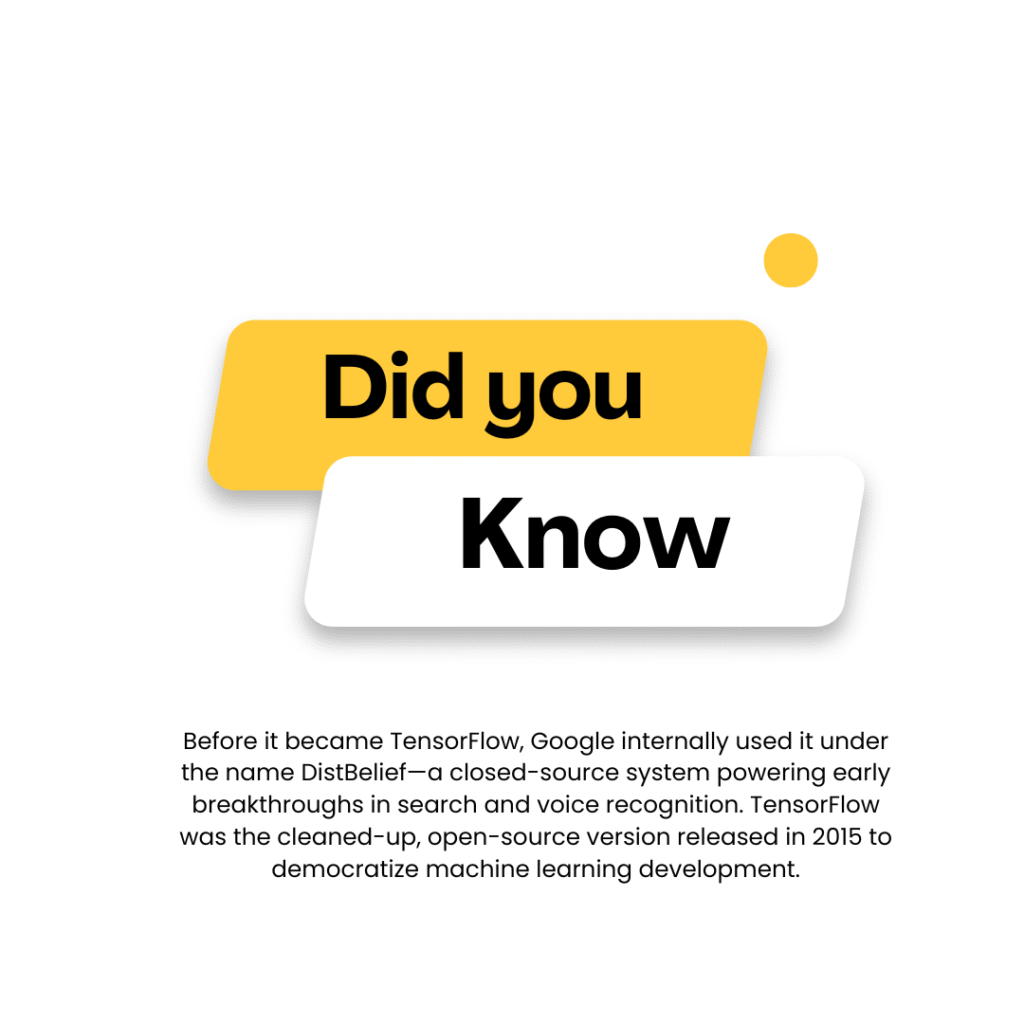
Keras
Keras began as an independent, high-level neural network API developed by François Chollet, with the goal of making deep learning more accessible and developer-friendly.
Over time, it became tightly integrated with TensorFlow and is now its official high-level API. What makes Keras unique is its simplicity. It abstracts away much of the complexity involved in designing and training neural networks, allowing users to build models with just a few lines of clean, readable code.
This minimalism doesn’t mean it’s limited—Keras is capable of supporting a wide range of models, from basic multilayer perceptron to sophisticated deep convolutional and recurrent architectures.
Because of its ease of use, Keras has become a go-to framework for newcomers to deep learning. But it’s not just for beginners. Researchers and developers often use it for rapid prototyping, where speed and flexibility are critical.
The API is designed around user experience: it’s consistent, easy to debug, and highly modular. Under the hood, Keras uses TensorFlow’s robust backend, which gives users access to powerful features like distributed training, hardware acceleration (including TPUs), and model optimization tools—all without having to write low-level code.
While it doesn’t offer the same depth of customization as PyTorch, Keras provides a strong balance between usability and performance, making it ideal for projects where fast development cycles and clear code structure matter.
Over the years, it has played a central role in making AI education and experimentation more inclusive, reliable, and efficient.
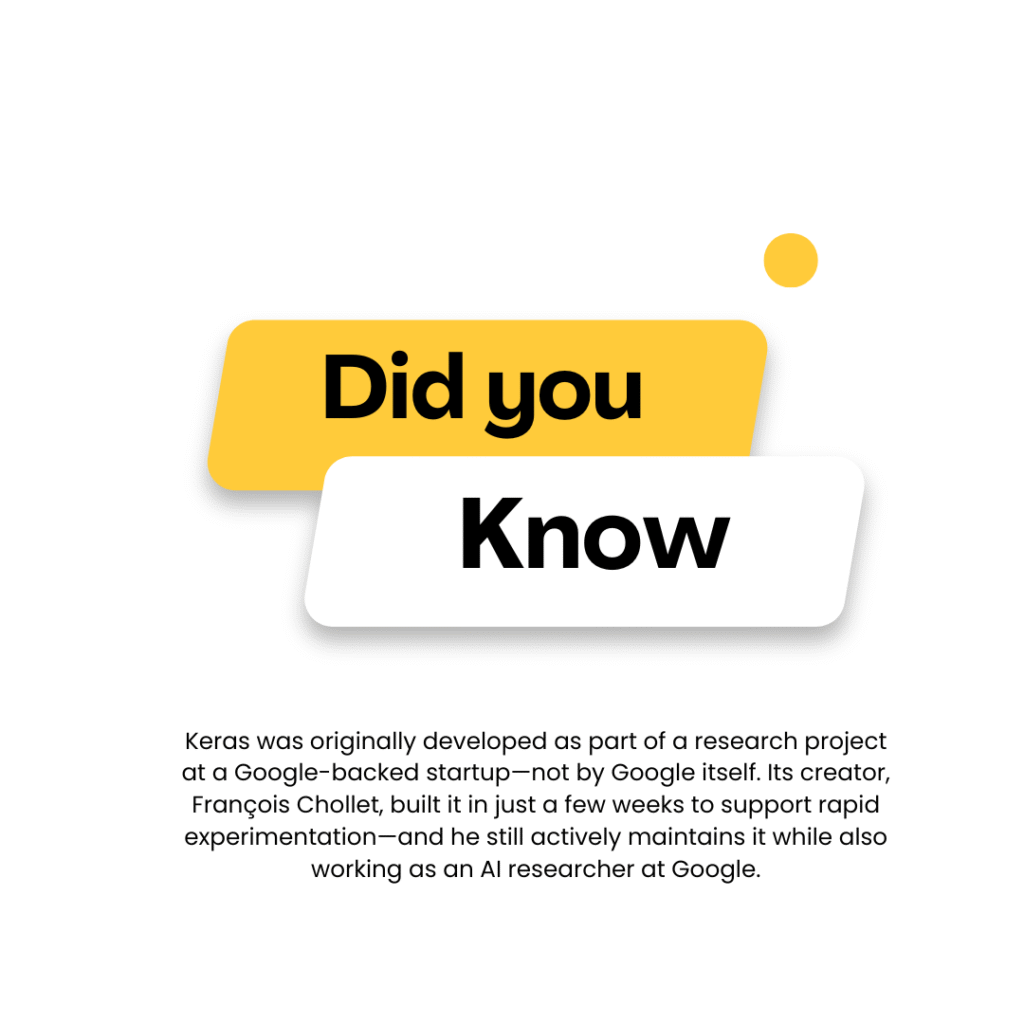
PyTorch vs TensorFlow vs Keras – Clear Differences
| Feature | PyTorch | TensorFlow | Keras |
|---|---|---|---|
| Ease of Use | Clean and Pythonic, but may feel low-level for newcomers. | Powerful but can get complex quickly, especially in custom workflows. | Extremely user-friendly. Ideal for beginners or fast prototyping. |
| Coding Style | Feels like standard Python. Easy to follow and debug. | Mix of low-level and high-level APIs. More verbose. | High-level and minimal. Abstracts most backend details. |
| Execution Model | Eager execution by default. Makes debugging intuitive. | Graph-based by default, but supports eager execution. | Uses TensorFlow backend, so inherits its execution model. |
| Performance | Fast and improving, especially with torch.compile(). |
Highly optimized, especially for deployment and large-scale training. | Performs well, but not as flexible for optimization. |
| Deployment Tools | TorchScript, ONNX, PyTorch Mobile. Easier now than before. | TF Serving, TFLite, TFJS. Broadest deployment support. | Relies on TensorFlow tools for deployment. |
| Community & Ecosystem | Strong and rapidly growing. Dominant in research circles. | Massive global community. Heavily backed by Google. | Huge support for education and prototyping; tied to TensorFlow. |
| Best Use Cases | Research, experimentation, custom architectures. | Production-level systems, mobile and edge deployments. | Education, small to mid-size projects, MVPs. |
| Learning Curve | Moderate. Easier if you know Python and NumPy. | Steeper due to lower-level operations. | Easiest. Designed for a smooth learning experience. |
| Industry Adoption | Used by OpenAI, Meta, Hugging Face, Stability AI. | Used by Google, Nvidia, and large-scale ML teams. | Common in online courses, universities, and early-stage projects. |
| Model Customization | Highly flexible. Great for custom layers and losses. | Flexible but requires more boilerplate. | Less customizable; best for standard models. |
PyTorch vs TensorFlow: Which One Performs Better?
When it comes to performance, both PyTorch and TensorFlow are highly capable, where both frameworks have matured significantly. PyTorch offers a more intuitive coding experience with its dynamic execution, which makes model development and debugging feel more natural. This makes it a favorite in research settings where rapid iteration and experimentation are crucial.
TensorFlow, on the other hand, excels in production environments. It is optimized for deployment across multiple platforms—from cloud servers to mobile devices. With tools like TensorFlow Serving, TFLite, and XLA (Accelerated Linear Algebra), it delivers top-tier speed and scalability.
So while PyTorch is often quicker to develop with, TensorFlow typically wins when it comes to fine-tuned performance at scale.
If you’re focused on experimenting and building models quickly, PyTorch offers a more natural, hands-on feel. But if your priority is deploying those models at scale—especially across different platforms—TensorFlow tends to have the stronger toolset for the job.
TensorFlow vs Keras: Aren’t They the Same?
Not exactly—TensorFlow and Keras often get lumped together, but they serve different purposes.
Keras is a user-friendly interface built on top of TensorFlow that simplifies the process of creating and training deep learning models by offering clean, readable syntax. It’s designed for ease of use, especially for beginners and rapid prototyping.
TensorFlow, on the other hand, is a full-fledged deep learning framework. It gives you access to lower-level tools for customizing models, optimizing performance, and deploying at scale. While Keras is now officially part of TensorFlow (as tf.keras), TensorFlow itself offers more flexibility and control under the hood.
In short: Keras makes TensorFlow easier to use, but if you need advanced features or production-grade deployment, TensorFlow alone gives you the depth and power to go further.
Keras vs PyTorch: Simplicity vs Flexibility
Keras is all about simplicity. It’s designed for developers who want to build deep learning models quickly without getting overwhelmed by the underlying mechanics. Its clean, high-level API allows you to define and train models in just a few lines of code, making it especially useful for beginners, educators, or anyone prototyping standard neural networks.
On the other hand, PyTorch offers more flexibility. It gives you full control over every part of the training loop, model architecture, and data pipeline. This makes it a favorite among researchers and developers working on custom or experimental models. While it requires more coding, PyTorch gives you the freedom to build complex solutions from the ground up.
Which Framework Fits Your Use Case?
| Use Case | Recommended Framework |
| Complete Beginners | Keras |
| University Research | PyTorch |
| Enterprise Production Systems | TensorFlow |
| Mobile and Edge AI | TensorFlow (TFLite) |
| Custom Architectures | PyTorch |
| Fast Prototyping | Keras |
PyTorch vs TensorFlow vs Keras: Ecosystem & Community
PyTorch
- HuggingFace and OpenAI use PyTorch.
- Strong GitHub and Stack Overflow presence.
- Great for building custom NLP and vision models.
TensorFlow
- Broadest ecosystem: TFJS, TFLite, TensorBoard.
- Used in major production systems including Google Search and Translate.
- Strong focus on cross-platform compatibility.
Keras
- Beginner-friendly with huge educational resources.
- Works well with TensorFlow backend.
Future Trends (2025 and Beyond)
- PyTorch is rapidly evolving with better deployment tools and mobile support.
- TensorFlow remains the go-to for enterprise and edge deployments.
- Keras is seeing fewer updates, but remains valuable for teaching and MVPs.
Expect AI frameworks to keep converging in performance while differentiating in ease of use and tooling.
Final Thoughts: PyTorch vs TensorFlow vs Keras
So, we have concluded that, if you want quick wins and are new to deep learning, start with Keras. If you’re aiming for flexibility and research-level experimentation, go with PyTorch. If you’re building scalable production-grade applications, TensorFlow is your best pick.
Ultimately, the best framework depends on your goals. Try all three if you can — that hands-on experience will teach you more than any blog post ever could.
Need help choosing or implementing a framework for your AI project? Drop your questions in the comments or reach out directly!
People Also Ask (FAQs)
Is TensorFlow better than PyTorch?
It depends. TensorFlow is better for deployment; PyTorch is better for research.
Can I switch from Keras to PyTorch?
Yes. The learning curve is manageable, and both use Python.
Which is best for beginners in 2025?
Keras, followed by PyTorch.
Is Keras still relevant?
Yes, especially for education and rapid prototyping.
Should I use TensorFlow or PyTorch for production?
TensorFlow is generally more production-ready.
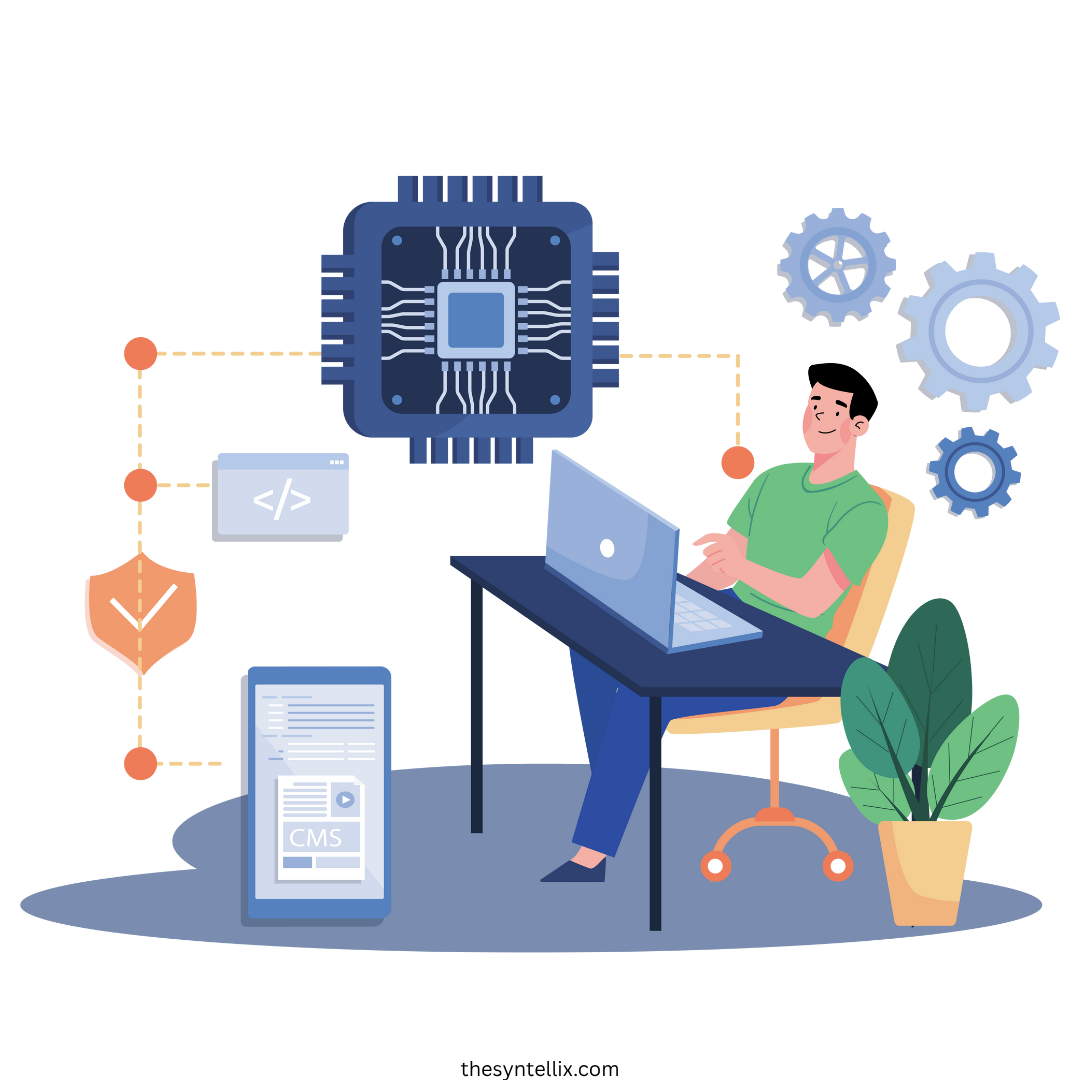
Stay ahead of the curve with the latest insights, tips, and trends in AI, technology, and innovation.
